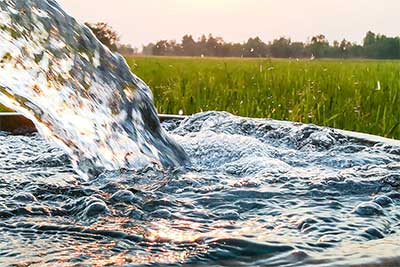State of Groundwater in India
In News
The Central Ground Water Board found the groundwater in villages adjoining, Panipat refinery of Indian Oil Corporation Limited unfit for drinking.
About
Country’s 80% drinking water needs are met by groundwater but numerous factories flow untreated effluents into the ground that is contaminating the ground water.
The pH value of water was not up to the adequate level and heavy metals such as iron, fluoride and uranium were found above the prescribed limit in the water at the Panipat refinery. The Public Health and Engineering Department has proposed to dig new borewells to provide clean drinking water in Panipat.
It was in January 1994, the Central Pollution Control Board (CPCB), Delhi, had taken up the first major groundwater quality monitoring exercise. The report published in December 1995 spotted 22 places in 16 states of India as ‘critical’ sites of groundwater pollution. CPCB found industrial effluents to be the prime reason for groundwater pollution.
A large part of un-collected, un-treated wastewater finds its way to either nearby surface water body or accumulated in the city itself forming cesspools. In almost all urban centers cesspools exist. These cesspools are good breeding ground for mosquitoes and also source of groundwater pollution. The wastewater accumulated in these cesspools gets percolated in the ground and pollute the groundwater.
Also in many cities/towns conventional septic tanks and other low cost sanitation facilities exists. Due to non-existence of proper maintenance these septic tank become major source of groundwater pollution.
In many urban areas groundwater is only source of drinking. Thus, a large population is at risk of exposed to water borne diseases of infectious (bacterial, viral or animal infections) or chemical nature (due to fluoride or arsenic). Water born diseases are still a great concern in India.
Pollutants are being added to the groundwater system through human activities and natural processes. Solid waste from industrial units is being dumped near the factories, and is subjected to reaction with percolating rainwater and reaches the groundwater level. The percolating water picks up a large amount of dissolved constituents and reaches the aquifer system and contaminates the groundwater.
The problem of groundwater pollution in several parts of the country has become so acute that unless urgent steps for abatement are taken, groundwater resources may be damaged.
The water used for drinking purpose should be free from any toxic elements, living and nonliving organism and excessive amount of minerals that may be hazardous to health. Some of the heavy metals are extremely essential to humans, for example, Cobalt, Copper, etc., but large quantities of them may cause physiological disorders. The contamination of groundwater by heavy metals has assumed great significance during recent years due to their toxicity and accumulative behavior.
Table 1: Land-use activities & their potential threat to groundwater quality
| Land Use | Activities potential to groundwater pollution |
| Residential | Un-sewered sanitation Land & stream discharge of sewage Sewage oxidation ponds Sewer leakage, solid waste disposal, landfill leachate Road & urban run-off, aerial fall out |
| Industrial and Commercial | Process water, effluent lagoon etc. Land & stream discharge of effluents Tank & pipeline leakage & accidental spills. Well disposal of effluent Aerial fall out Landfill disposal & solid wastes & Hazardous wastes Poor housekeeping Spillage & leakages during handling of material |
| Mining | Mine drainage discharge Process water, sludge lagoons Solid mine tailings Oilfield spillage at group gathering stations |
| Rural | Cultivation with agrochemicals Irrigation with wastewater Soil Stalinizations Livestock rearing |
| Coastal areas | Salt water intrusion |
Common Groundwater Contaminants
- Nitrates: Dissolved nitrate is most common contaminant in groundwater. High level can cause blue baby disease (Methemoglobinemia) in children, may form carcinogens & can accelerate eutrophication in surface waters. Sources of nitrates include sewage, fertilizers, air pollution, landfills & industries;
- Pathogens: bacteria & viruses that cause water borne diseases such as typhoid, cholera, dysentery, polio, and hepatitis. Sources include sewage, landfills, septic tanks & livestock’s;
- Trace metals: include Lead, Mercury, Cadmium, Copper, Chromium & Nickel. These metals can be toxic & carcinogenic. Sources include industrial & mine discharges, fly ash from thermal power plants either due to fall out or disposal in ash ponds. Industrial solid waste dumping and leaching into groundwater through rainwater;
- Inorganic Constituents: Inorganic dissolved salts accumulation such as SO4, Chloride, etc. along with Na, K, building up high dissolved solids and combination of Carbonates, Bicarbonates along with Ca and Mg building up high hardness of water and converting soft/sweet water in to hard water creating gastrointestinal problems in human being if they consume groundwater as drinking source;
- Organic compounds: include volatile & semi-volatile organic compounds like petroleum derivatives, PCBs pesticides. Sources includes agricultural activities, street drainages, sewage landfills, industrial discharges, spills, vehicular emissions fall out etc.
Measures to control groundwater pollution
- Landfills should be properly designed, maintained, and operated. Sites should be located away from sensitive groundwater areas. Hazardous wastes should be disallowed unless the landfill is properly designed and monitored against dangerous levels of bacteria, organic chemicals, metals, and nitrates.
- Underground storage tanks should be able to meet regulatory compliance policies on their installation and maintenance. A leak backup containment device should be in place in case of spills. Unused tanks should be removed or filled with inert material.
- Pipelines should be properly installed, regularly inspected and maintained against corrosion, defective welds, and displacement caused by tree roots and vibrations from heavy vehicles.
- Deep Groundwater should be regularly tested and reviewed, especially in urban areas that depend on it as a major source of water.







